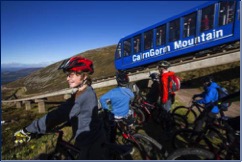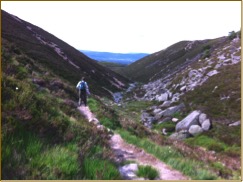

George Allan
What are the hills and our wilder landscapes for?
I first saw the hills primarily as places for adventure. With time, I have developed a greater understanding of their vulnerability and how easily their unique qualities can be lost; an experience that I am sure will be shared by many in NEMT. It is, therefore, instructive and sometimes alarming to meet people who view such places from totally different perspectives. We don't expect most land owners and estate staff to share how we view things but, increasingly, conflicts are occurring between different recreational groups.
I was chatting recently to a mountain biking enthusiast and, inevitably, we were disagreeing about how much damage bike tyres do to both paths and ground. He then said to me that since the Lairig Ghru path has been regularly maintained it has become a less of a challenge for bikers. His solution, and this is when my heart sank, was to create a dedicated and difficult mountain bike track through the Lairig Ghru above the existing path.
Two types of User...


This discussion takes us to the heart of the original question: what are the hills and our wilder landscapes for? Are they places to be exploited for economic benefits, in line with the subtext of so many governmental and official planning documents? Should they be developed or made more accessible for sporting or recreational interest groups whether these are grouse shooters, deer stalkers, mountain bikers, climbers or hill walkers? Or should we take a different tack. Perhaps what is left of our wilder landscapes should be seen as places where nature has priority and our visiting is not a right but a privilege which brings with it responsibilities. As W.H. Murray said:
'Land and wildlife have their own being in their own right. Our recreation is an incidental gain, not an end in itself to be profitably pursued by exploiting land where that means degrading it'(1).
This doesn't mean not going to such places but it does mean visiting with their protection as our overriding priority. It also means taking action, when action is needed, to allow the natural world to flourish in its own way where we have already impacted on it (e.g. maintaining paths; reducing deer numbers; encouraging the regeneration of natural woodland). It also demands that we champion the view that land and wild life have 'being in their own right' and oppose activities or developments which would undermine this perspective.
(1) Introduction to Andy Wightman, Scotland's Mountains, an Agenda for Sustainable Development
Please let the webmaster know if there are problems with viewing these pages or with the links they contain.